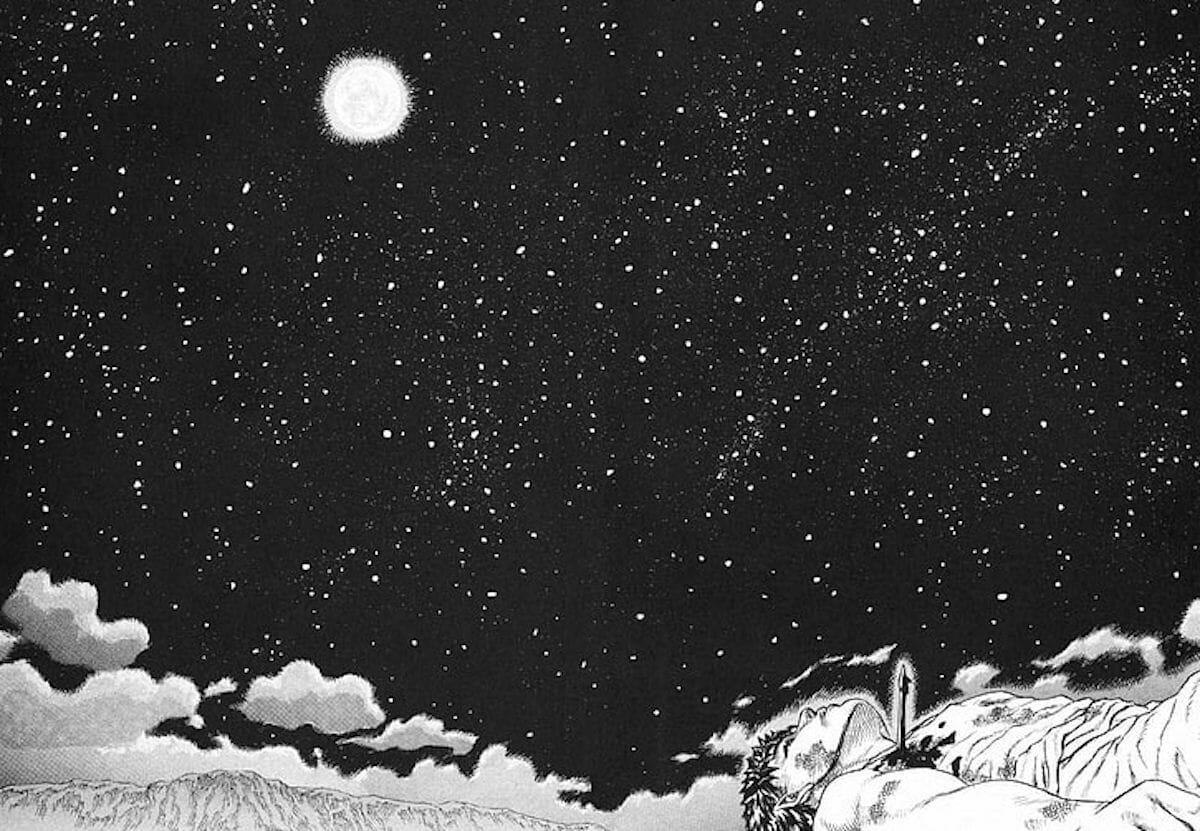Among the hoards of notable mangaka in the world, few could deny the impact and awe that Kentaro Miura bestowed on the comics industry with his beloved comic Berkserk. With his death having been announced late yesterday evening via the Berserk Project on Twitter, it’s definitively past time that audiences across the globe paid attention to the incredible skill and impressive longitude of Dr. Miura’s incredible body of work.
Born in 1966 in Chiba City, Japan, Miura developed an early gift for creating art. By the young age of ten, Miura was already making his first manga, Miuranger, which was published via his school’s newspaper and eventually lasted for more than forty volumes. As Miuria grew older and continued his way through school, his distinctive art style began to take shape, particularly as he discovered a newfound use of India ink and began studying through a more artistic curriculum in high school.
Miura’s doujinshi were soon being published in magazines, and he was able to work as an assistant to Hajime no Ippo creator George Morikawa. He wasn’t slow to rise through the ranks, quickly learning — and, just as quickly, even surpassing — skills that were being taught to him by his mentors. This may be why 1985 saw Miura applying for Nihon University, the prestigious private college in Tokyo, where he was accepted for his project Futanabi, a story that later saw him recognized in Weekly Shōnen Magazine. While his initial works were not considered anywhere near successful, it was only a matter of time before Miura broke though with the concept of Berserk in publisher Hakusensha’s serialized magazine Monthly Animal House (later renamed Young Animal.)
First launching in 1989 — and continuing to run up until Miura’s passing — Berserk was a dark fantasy that has undeniably captured audiences for the past 31 years without stopping. The story follows Guts, a warrior and demon-slayer with an ungodly large sword (and an iron hand), who wanders the lands of Midland — a setting not unlike medieval Europe — ready to face his former friend Griffith, the leader of a band of mercenaries known as the Band of the Hawk. Gruesome, macabre, and often surprisingly good-humored, Berserk not only set the tone for what is easily considered one of the best-selling and beloved manga series in comic book history, but has become a cultural cornerstone for many video game, TV show, and film concepts (including Game of Thrones, as well as the Dark Souls, Dynasty Warriors, and Final Fantasy video game series, and countless other manga and anime titles).
Miura’s work also found itself among the American market with publisher Dark Horse taking the reins on collecting and translating Berserk for American audiences. There was clearly no problem with Miura’s popularity in the Western market, because 2017 saw Chris Warner — editor of Dark Horse — announce that more than 1.2 million copies had been sold in North America. Warner celebrated by explaining Miura’s “[…]astonishing visual tapestry is like nothing else in graphic fiction. While horror and violence are at times disturbing and unquestionably adult, Miura still manages to produce genuine emotion and plenty of humor.”
In this same way, it’s said by those who know him to have been kind, precise, and hard-working, Miura’s artwork can be seen as something of a mirror to his own intensity and optimism. Though Berserk is often touted as being intensely brutal, violent, and at times traumatizing in regards to various forms of assault, in particular, the plot-lines often find themselves — despite their graphic nature — on a note that reflects the light at the end of the tunnel for those who have been wronged, hurt, and harmed. Many fans have taken to Twitter to praise Miura in his passing for helping them understand their journey to healing through the complex stories and intensely raw images of his manga. What more could any creator want than to leave a lasting impression, even in the most unlikely of ways.
In his passing, Berserk is left unfinished with little announced in the way of what will become of the series. But much like the other greats of his time, Kentaro Miura will live on in the hearts of fans and critics as a storyteller whose thirty years of stories were so brilliant that they will never feel like enough.













